2012 Beetle adds athletic style to ‘cute’
By John Gilbert
Model renovations occur every four or five years throughout the auto industry, but not at Volkswagen. When the German company says its 2012 Beetle is “all-new,†don’t dismiss it as routine — it is only the second renovation in the car’s 74-year lifetime.
The first VW was produced in 1938, and was called “Volkswagen,†or the “people’s car.†By 1949, it was brought into the U.S., where people were charmed by the novelty of such a small and economic car, with its rounded-roofline, which resembled a beetle, so they started calling it the “Beetle,†with “Bug†as its nickname. Just as well, because the expanding company itself by then was known as Volkswagen. The Beetle’s familiar shape continued south of the border, until 2003, when the last one was produced in its Mexican plant.
Meanwhile, in 1998, Volkswagen decided to resurrect its icon, replacing the rear-drive car with a larger, retro-modern front-wheel-drive second generation. It was called the “New Beetle,†to recall its predecessor but also put distance between the two.
Together, Beetles and New Beetles sold over 21.5-million worldwide, with over half of annual sales in the U.S. Owners all agreed they were steady, dependable, economical, user-friendly, and charmingly cute. But the word performance was never be used to describe those Beetles.
It doesn’t take long behind the wheel of the 2012 Beetle to realize the assessment must change from “cute little car†to “cute little car; goes like hell.â€
It’s not a street racer, but its quick responses are closer to a sports coupe than a car with such familiar charm.
The new generation car sheds the “New†and again is called “Beetle,†and it rides on a new platform with a wider and lower stance and firmer suspension. It is stretched 6 inches, to 168.4 inches, on a 99.9-inch wheelbase; it is 71.2 inches wide, 3.3-inches more; and it stands 58.5 inches tall, a half-inch lower than the New Beetle.
Its updated engines include the surprisingly strong 2.5-liter 5-cylinder, and the hot, 200-horsepower 2.0-liter 4-cylinder turbo — of Golf and GTI prominence.
It’s not GTI-hot, but it performs with enough spirit to give you pleasure whenever you drive it, and an extra kick whenever you find the need to push it a little. Or a lot. I enjoyed the feel of the bright red test vehicle, but I hadn’t pushed it hard, until one night when I was driving through Minneapolis on Interstate 94 at about 11 p.m. A rude and aggressive driver in a large Tahoe SUV had come up behind a row of cars in the left lane, closing to within 10 feet of each and flashing its lights urgently, virtually forcing them to pull over.
I moved into the far right lane because I was nearing the exit onto westbound 394, satisfied that I had gotten clear of that bozo in the process. The serpentine-like exit ramp bends gently up and to the right, then makes a hard, sweeping left, before a more gradual right blends into 394. I caught a glimpse of the big SUV, speeding up the left, then veering into the middle lane. I wanted no part of being cut off or run off the road, so I gave the Beetle a dose of gas and accelerated. As if on cue, the Tahoe cut in behind me, surging right up onto my tailpipes as we started up the exit. Annoyed, and seeking refuge, I downshifted and hammered the gas pedal. The Beetle surprised me, zipping up the ramp to the right, and staying flat enough that I could keep accelerating around the hard left curve. It held its flat attitude as I powered through the esses, and when I glanced in the rear-view mirror, there was no Tahoe for several seconds.
Finally, its headlights appeared, a half-block back. About a mile later, I was cruising at the speed limit in the right lane when the Tahoe roared past in the left lane, going about 75 or 80. Last call, or Big Mama’s curfew, must have been urgently calling, but I got a chuckle at the incongruity of that big, V8-powered SUV being unable to stay with the cute, little Beetle around a series of curves.
The 2012 Volkswagen Beetle was just reaching showrooms in mid-October when we got the test car for a week. My wife, Joan, and I drove it as much as possible, around the Minneapolis-St. Paul area, then northward to Duluth, Minnesota. Several times, when we’d stop, people would be waiting to ask about it. The best was in the tiny North Shore town of Knife River, best known for a smoked fish shop (with maple sugar-cured salmon), and a fantastic homemade chocolate shop (try the dark chocolate covered almonds with little toffee bits), and decided to stop for lunch at the just-opened Lighthouse at Emily’s.
A restaurant named The Lighthouse, just out of town, had closed shortly after another restaurant, known as Emily’s, also had closed. We don’t know if Emily ever even saw a lighthouse, but the Lighthouse owners decided to move into the former Emily’s, and use both names. We climbed out of the Beetle, when a woman about to enter the place stopped to stare at the car. She walked over and asked, “What kind of car is that?â€
I explained that it was a new generation, thoroughly revised, Beetle. She asked how I liked it, and when I told her it was a test-drive car, the first to reach Minnesota, she hurried inside to point it out through the window to her friends. Personally, I don’t think the 2012 Beetle looks that remarkably different from the “New Beetle†of the past decade. There are some definite changes to the new car, and its lower, sleeker silhouette blends with the wider stance for a lower-shouldered look, which can earn a second glance, even to Beetle zealots.
Without question, the altered roofline silhouette and more-planted look draws attention. The Beetle looks more aggressive, and it’s appropriate that its performance is also hotter.
The base Beetle starts just under $19,000, with the 2.5-liter 5-cylinder engine. I must say I’ve never been a big fan of that engine, but in the new car it has 170 horsepower at 5,700 RPMs and 177 foot-pounds of torque at 4,250. That’s 30 less in both horsepower and torque than the smaller but turbocharged 2.0. The 2.5 has sufficient enough punch that when I made my swift evasive maneuver on I-94, I thought it must have the 2.0 Turbo. Other models, with sunroofs and other options, rise up from $19,000 to the $24,000 region of the hotter 2.0 Turbo, which has a six-speed stick, to the 2.5’s 5-speed, or the DSG clutchless-manual 6-speed automatic.
The Beetle is such an icon that restyling it must be done with great care, so as not to eliminate the strong ties to its heritage. Everybody can remember their first ride or drive in a Volkswagen Beetle, whether New Beetle or original.
For me, it was a 1960 original Beetle, purchased by my mother a couple years after my dad died. It was neat, tight, had a slide-open sunroof, along with the old and quite docile flat-opposed rear engine, with rear-wheel drive and a 4-speed stick. With the majority of weight over the drive wheels, its light steering and fantastic rear-wheel traction were assets in spring, summer and fall. Ah, but winter comes along every year as well, in Duluth, and while traction was good for getting through snow, if you hit an ice-covered street, the little Beetle would try its best to swap ends. The heavier rear, with drive wheels spinning, would skid one way or the other, trying to overtake the front wheels, and any attempts to counter-steer or to brake would lead to a spectacular, thrill-show endeavor with the rear end swinging back and forth like a pendulum, until or unless it went completely around.
That 1960 Beetle was special, because all of those original Beetles had no heat in wintertime. The air-cooled engine produced a lot of heat, actually, but no occupant ever knew it in winter, because it didn’t have a blower, so nothing forced the hot air forward. Back in Wolfsburg, it might have seemed adequate to design a little channel to transport the heat from the rear engine to the front, where it could link up to dashboard vents in the passenger compartment. Trouble was, without a blower, the only air that reached the front was refreshingly chilled by that 10-below outside air blowing on that bare, exposed, and uninsulated steel channel.
Our Beetle was a comparative joy, however, because it had an optional, dealer-installed gas heater, located under the front hatch. It started up at the pull of a switch, and, while emitting the sound of a jet engine that easily nullified the powerful Blaupunkt radio, it would blast hot air into the front seat area. There was no middle ground, though, leaving occupants with a choice: Risk hypothermia by freeze to a popsicle-like state, or pull the switch and immediately be uncomfortably hot. We’d alternate, in short bursts. Think 10 below, then 120 above.
Fuel economy was good, and my buddies and I had many fantastic high school weekend night experiences in that 1960 Bug. In warm weather, we’d open the sunroof, and one guy would stand up in the back seat, with binoculars, looking like a U-boat captain on the conning tower.
It didn’t even matter that there was no fuel gauge. You drove till it sputtered, then reached down on the floor to flipped a switch 90 degrees and connect to the reserve tank. That brought the engine back to life for another few miles — enough to get to the gas station, where you could pool your coins to get gasoline, which cost 34.9 cents a gallon back then.
It was fun, economical, absolutely trouble-free, and always “a cute little car.†Nobody, however, considered mentioning the word performance in its presence. It’s taken until the introduction of the 2012 Beetle to change all that.
Comments
Tell me what you're thinking...
and oh, if you want a pic to show with your comment, go get a gravatar!


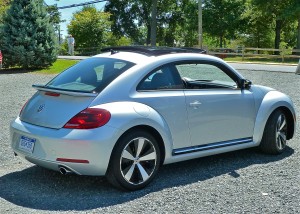
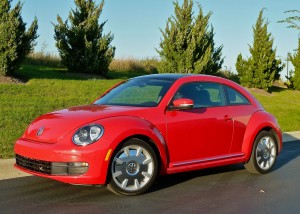
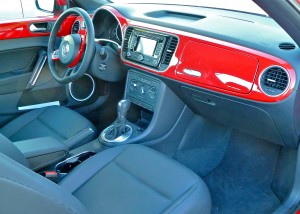
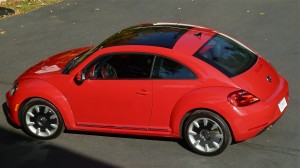
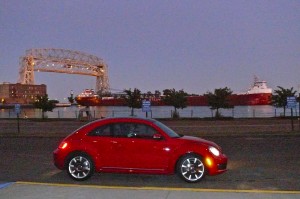
 John Gilbert is a lifetime Minnesotan and career journalist, specializing in cars and sports during and since spending 30 years at the Minneapolis Tribune, now the Star Tribune. More recently, he has continued translating the high-tech world of autos and sharing his passionate insights as a freelance writer/photographer/broadcaster. A member of the prestigious North American Car and Truck of the Year jury since 1993. John can be heard Monday-Friday from 9-11am on 610 KDAL(www.kdal610.com) on the "John Gilbert Show," and writes a column in the Duluth Reader.
John Gilbert is a lifetime Minnesotan and career journalist, specializing in cars and sports during and since spending 30 years at the Minneapolis Tribune, now the Star Tribune. More recently, he has continued translating the high-tech world of autos and sharing his passionate insights as a freelance writer/photographer/broadcaster. A member of the prestigious North American Car and Truck of the Year jury since 1993. John can be heard Monday-Friday from 9-11am on 610 KDAL(www.kdal610.com) on the "John Gilbert Show," and writes a column in the Duluth Reader.